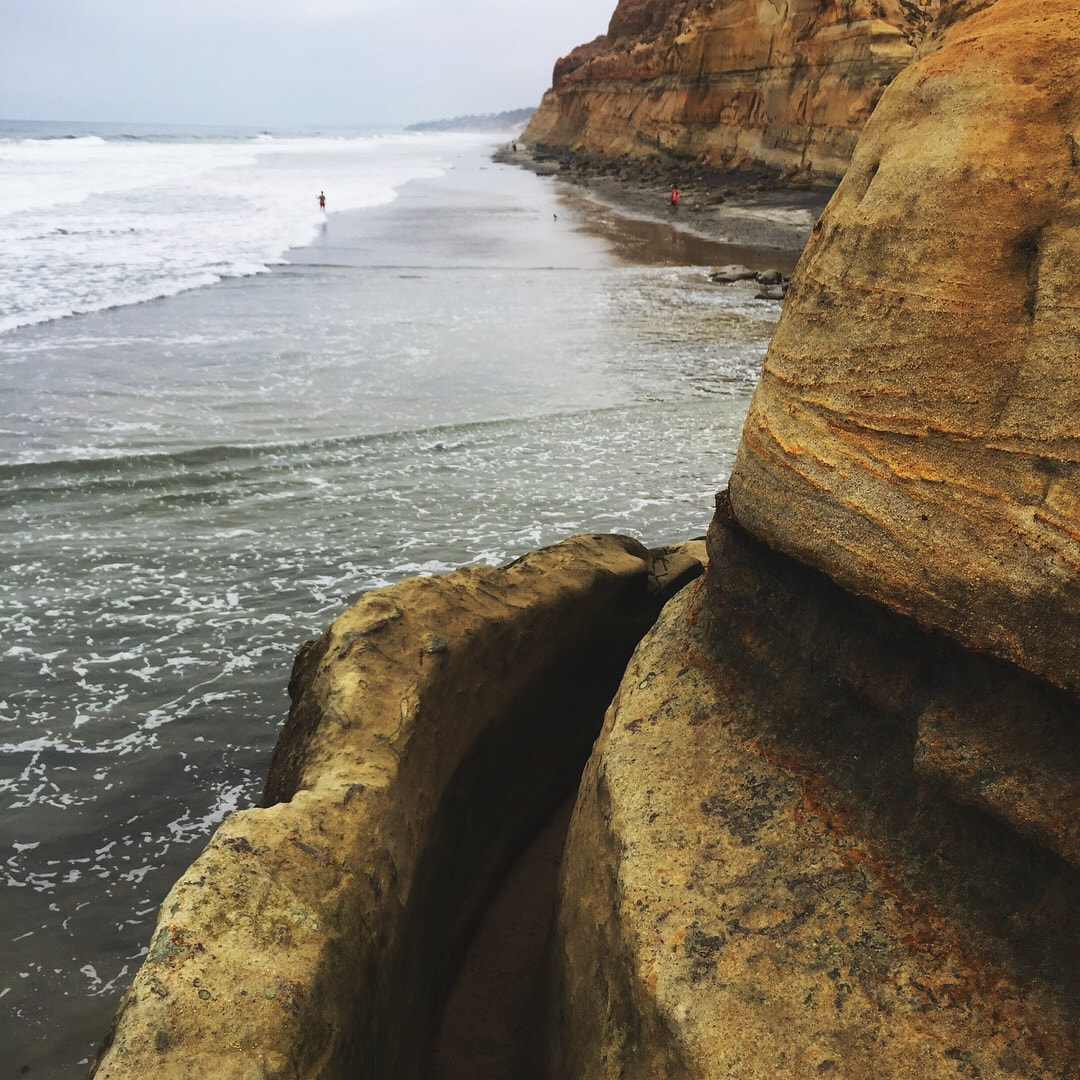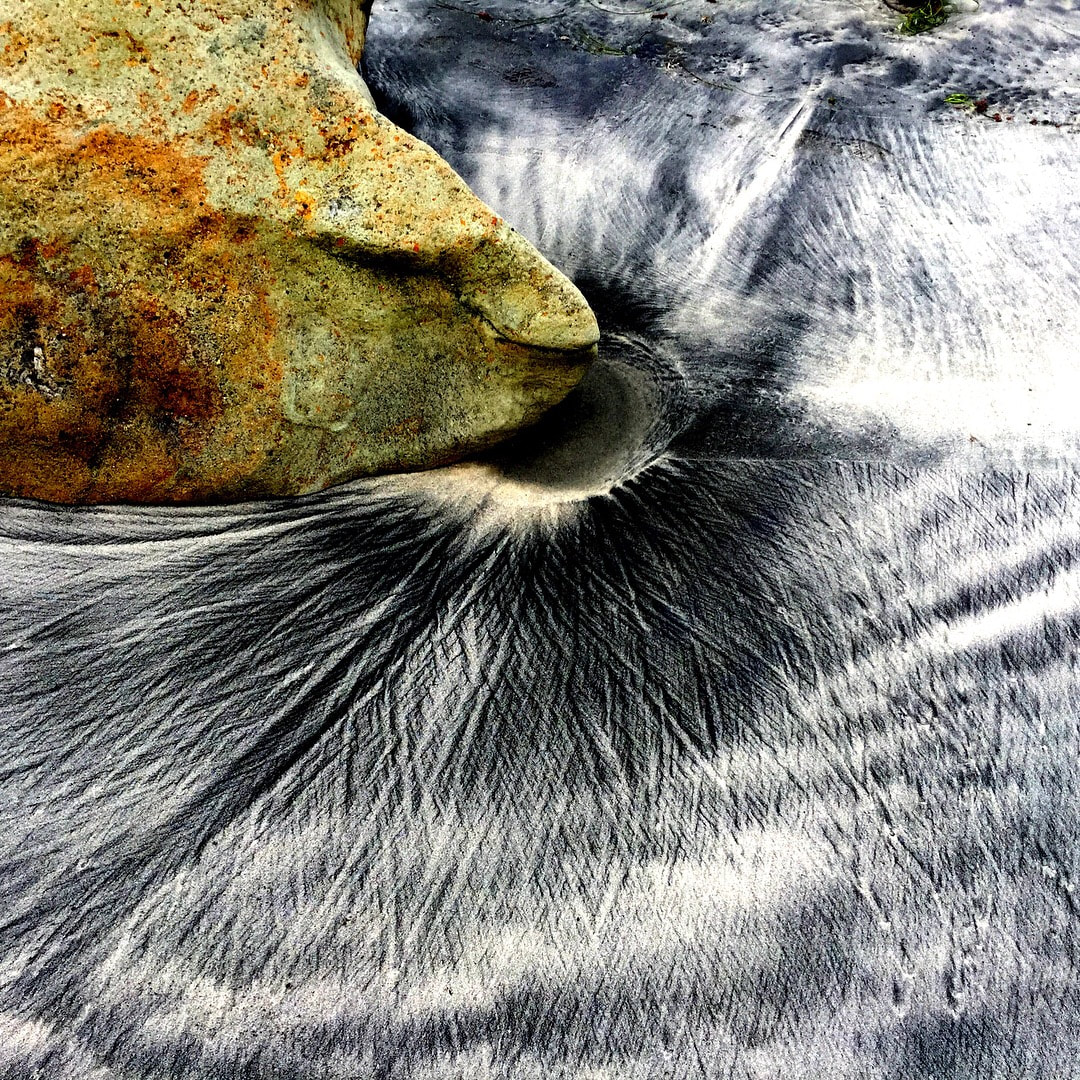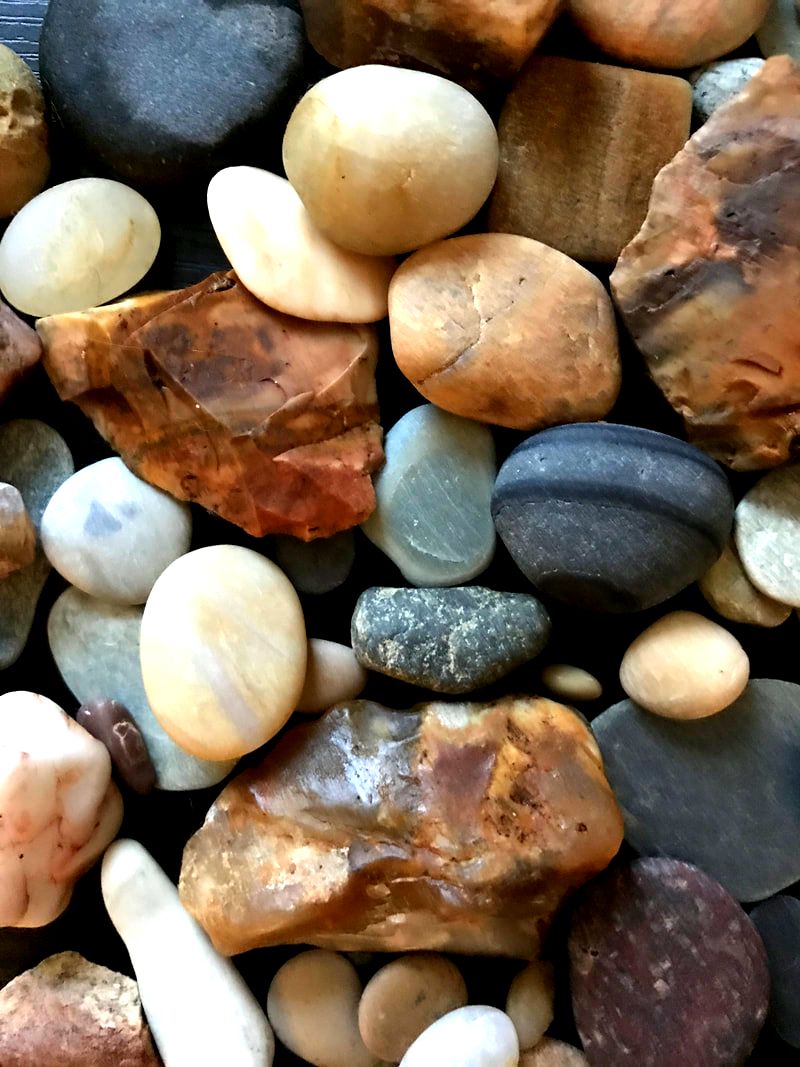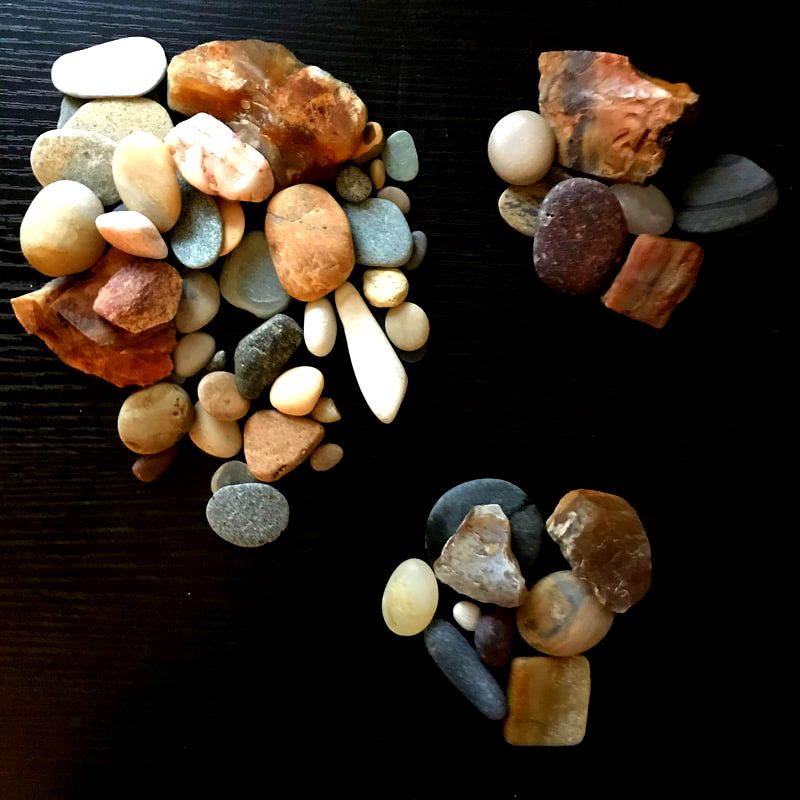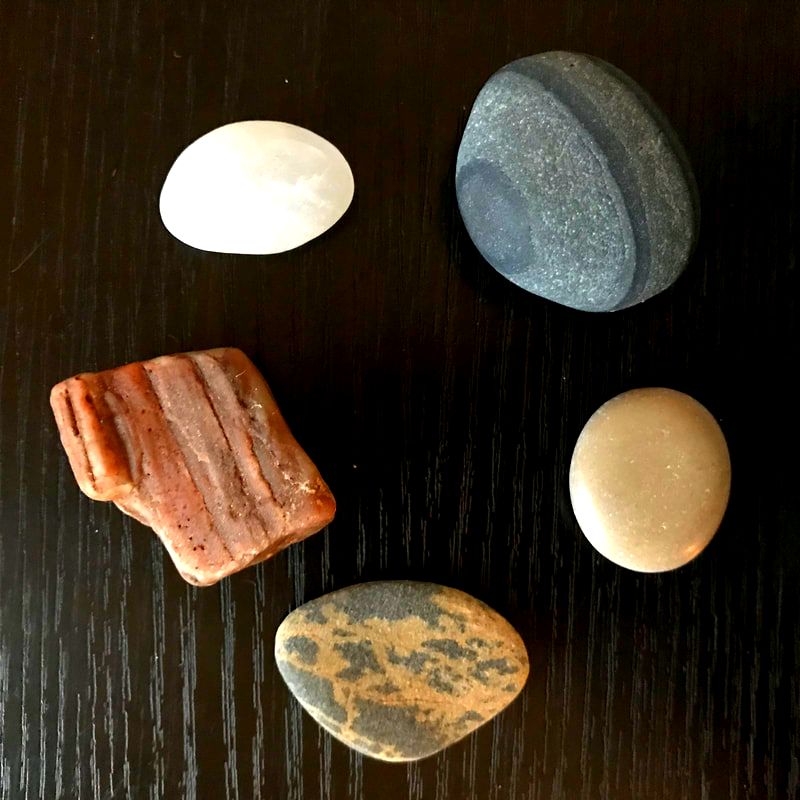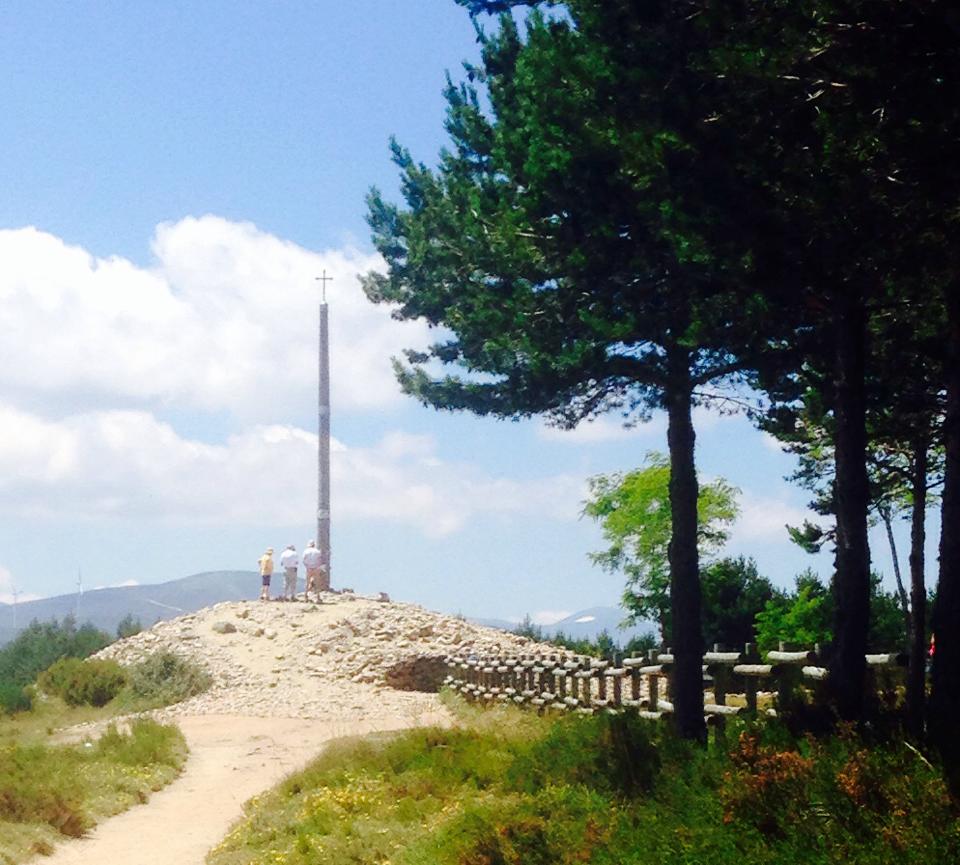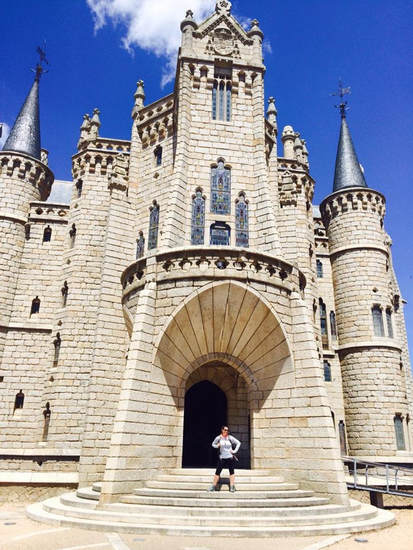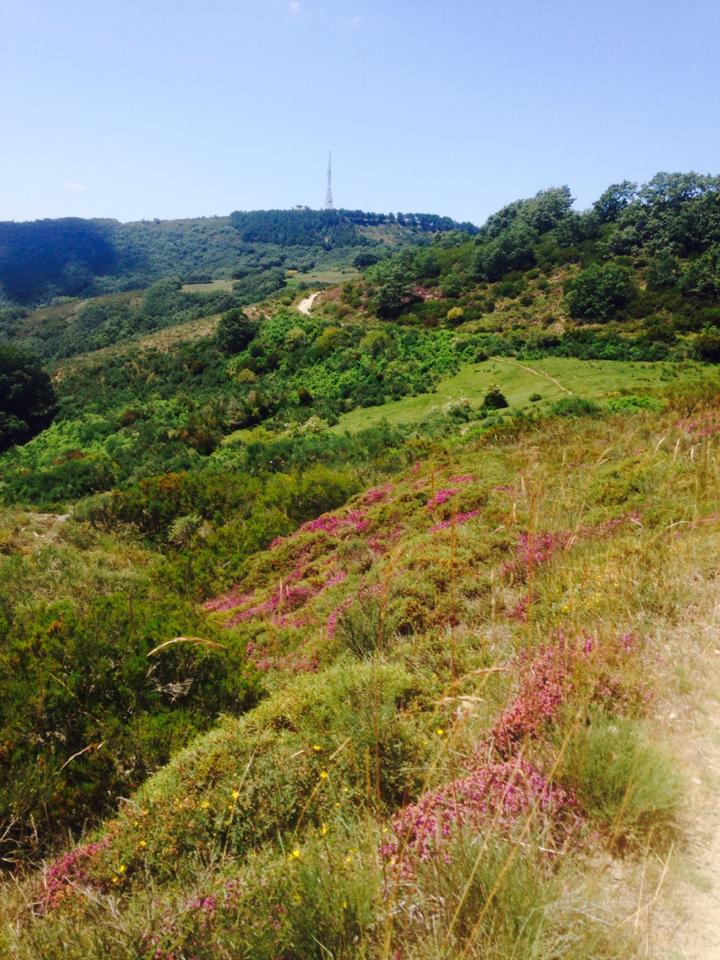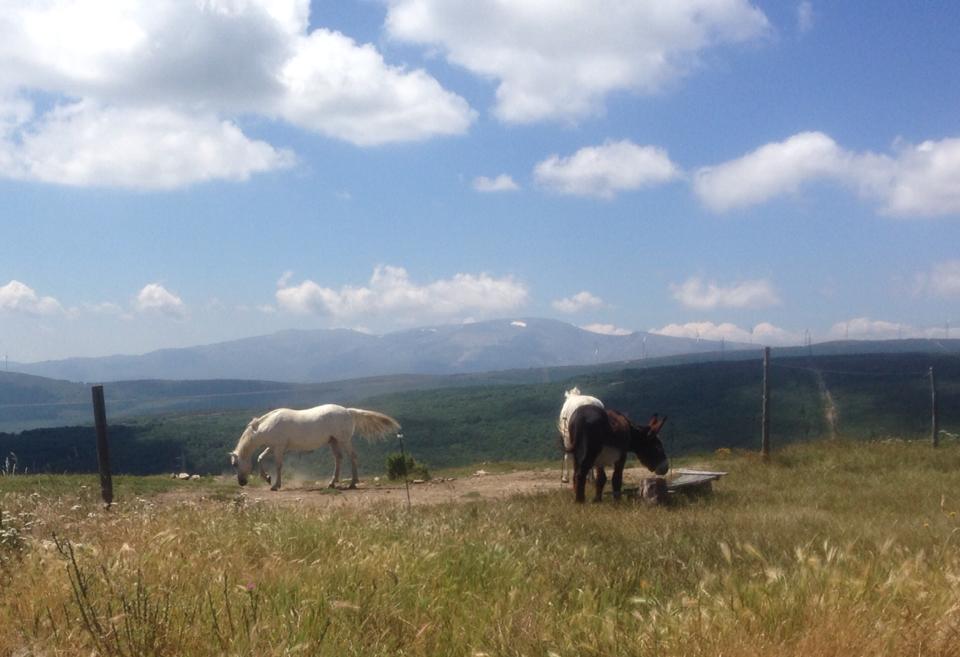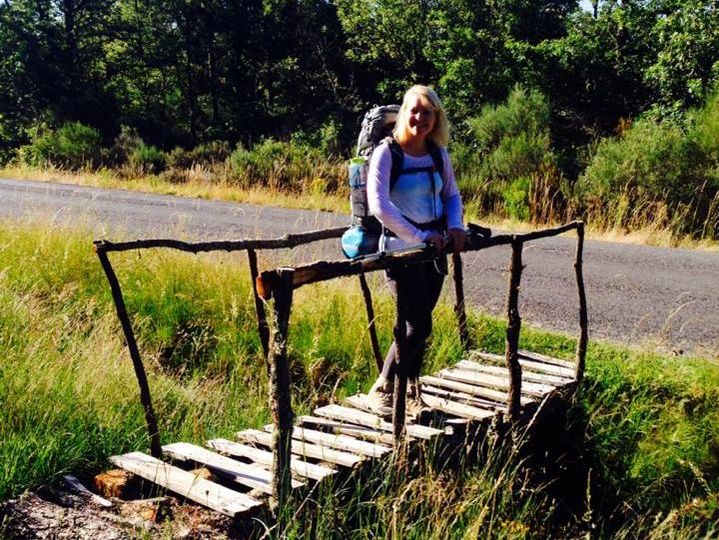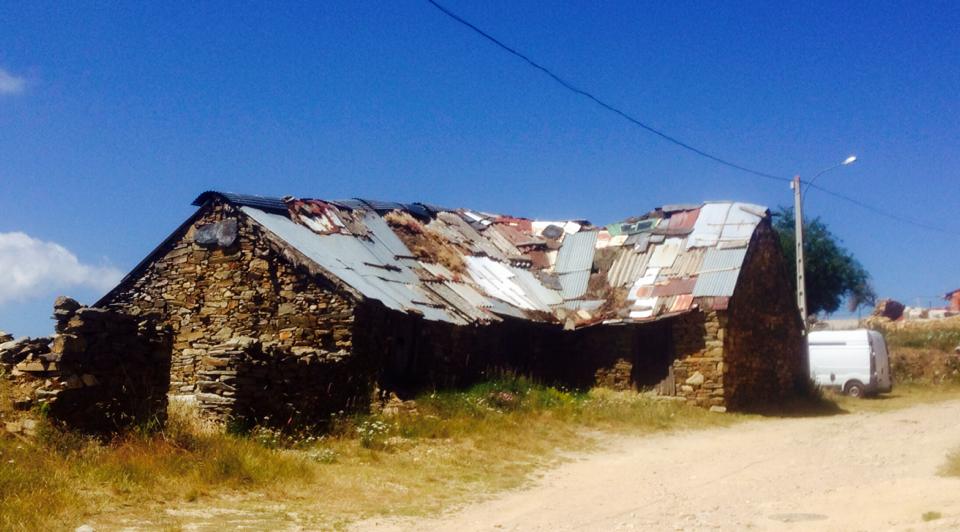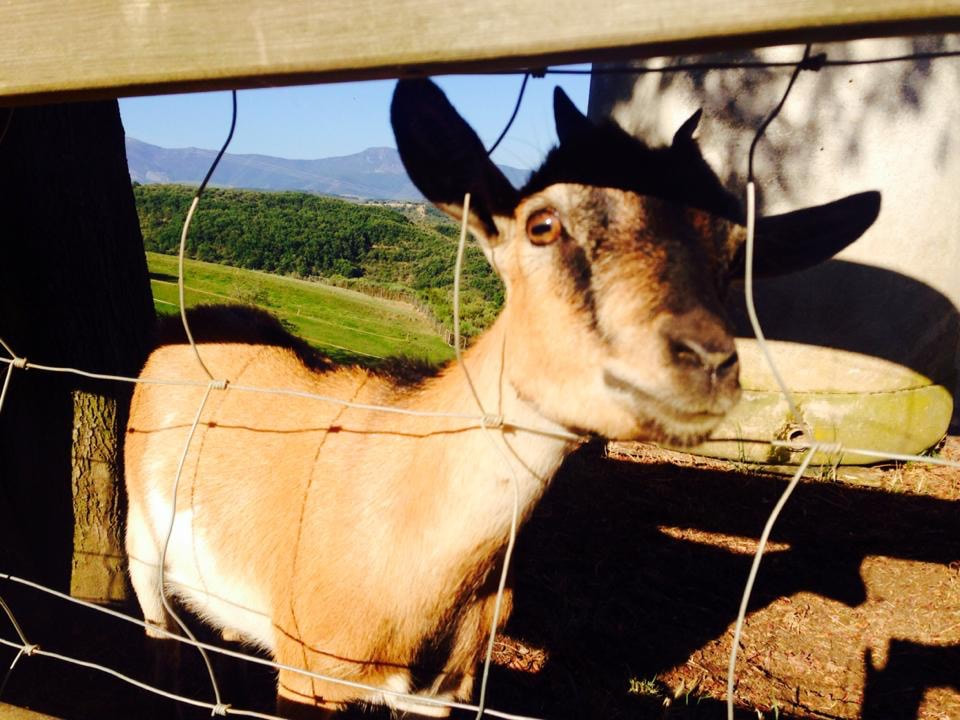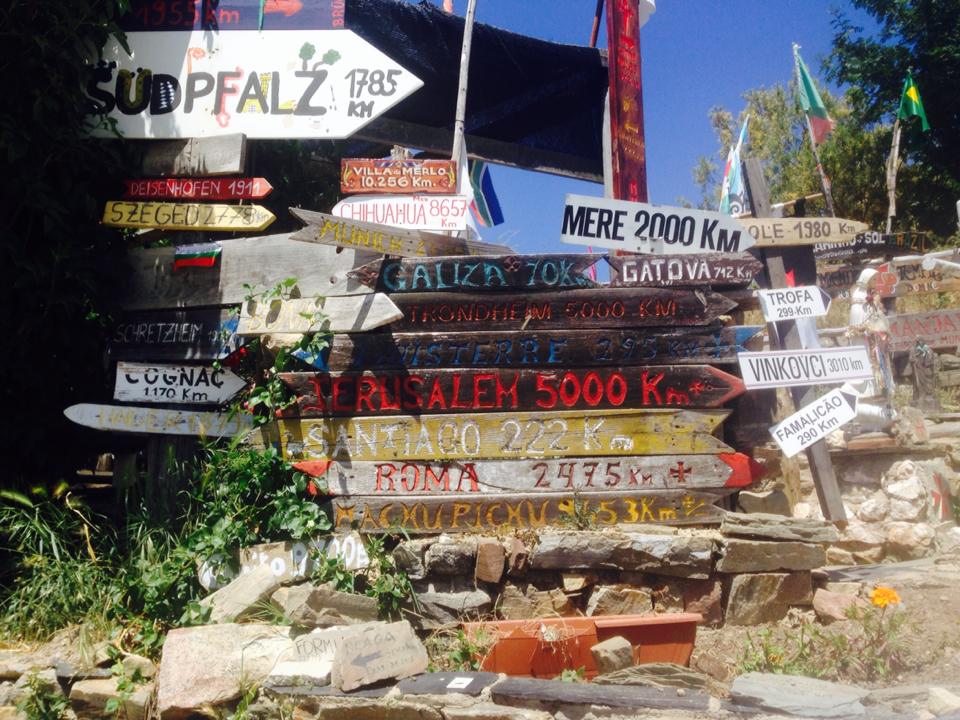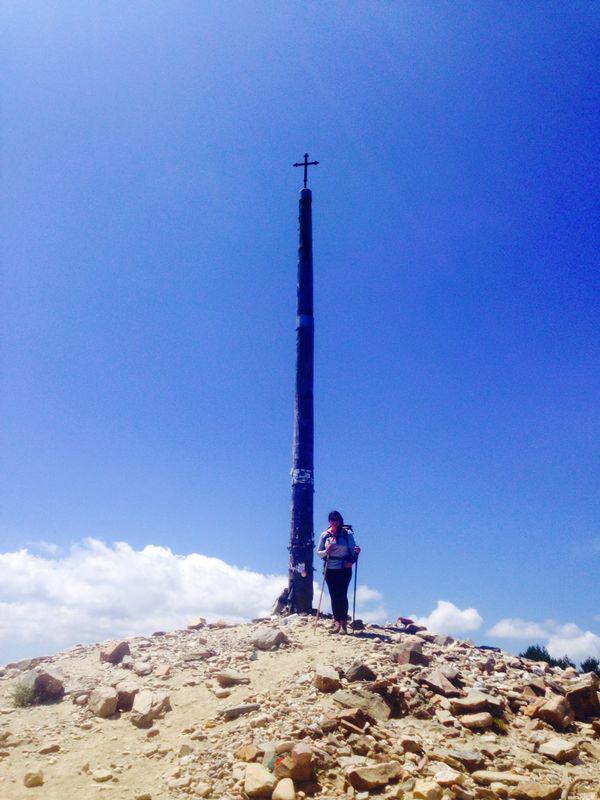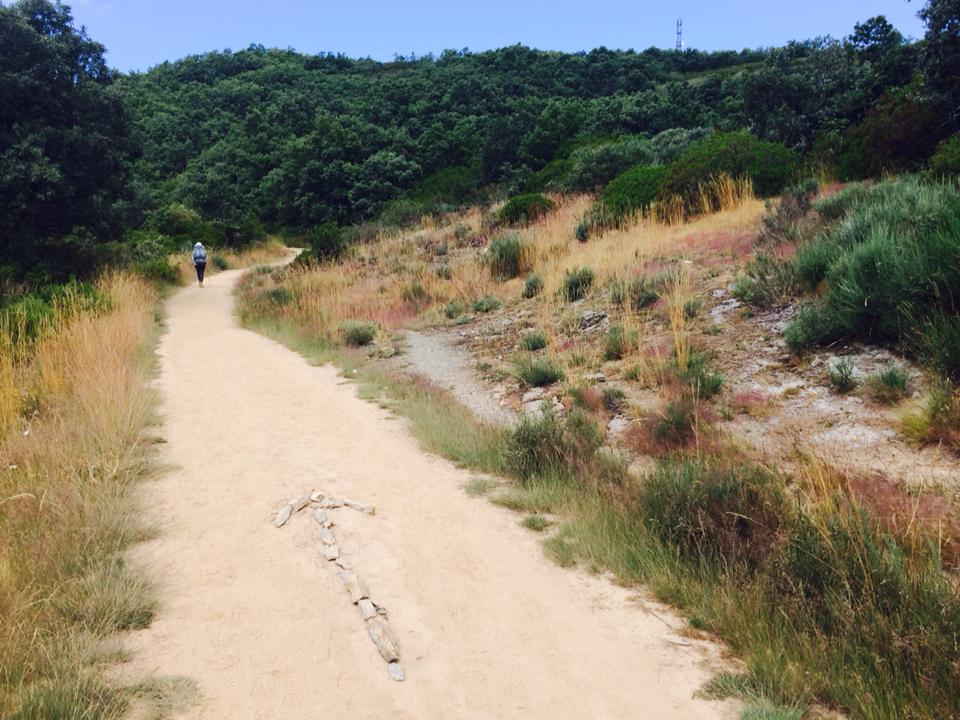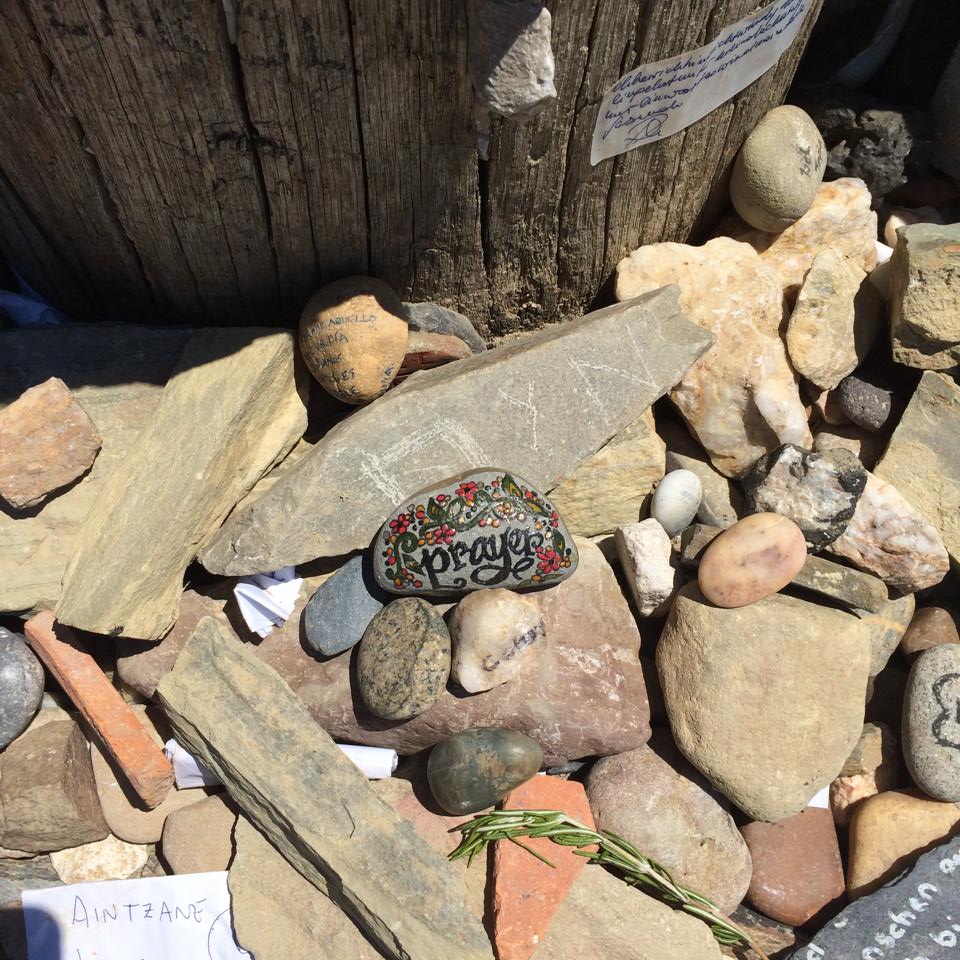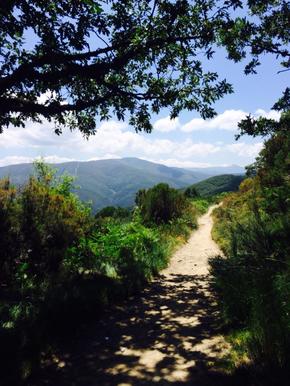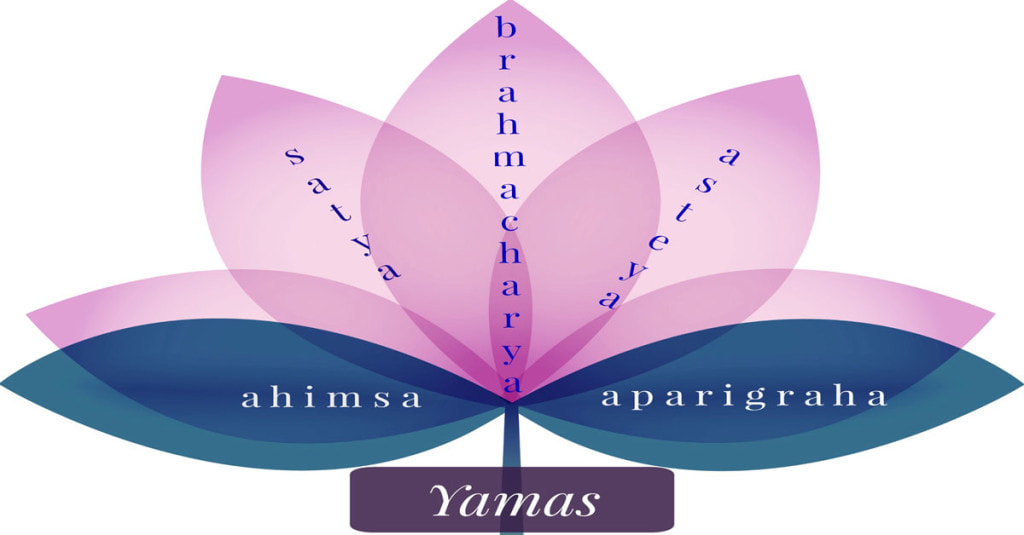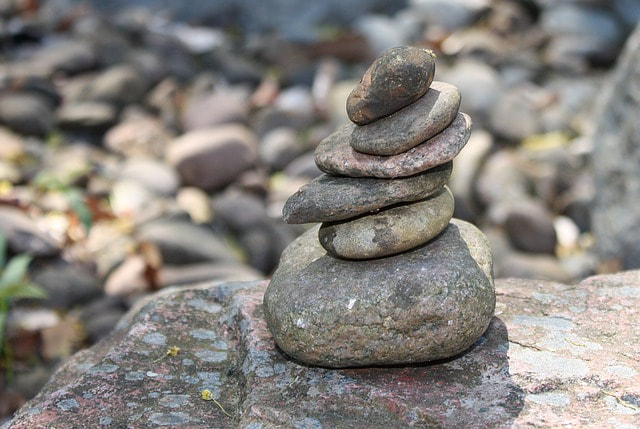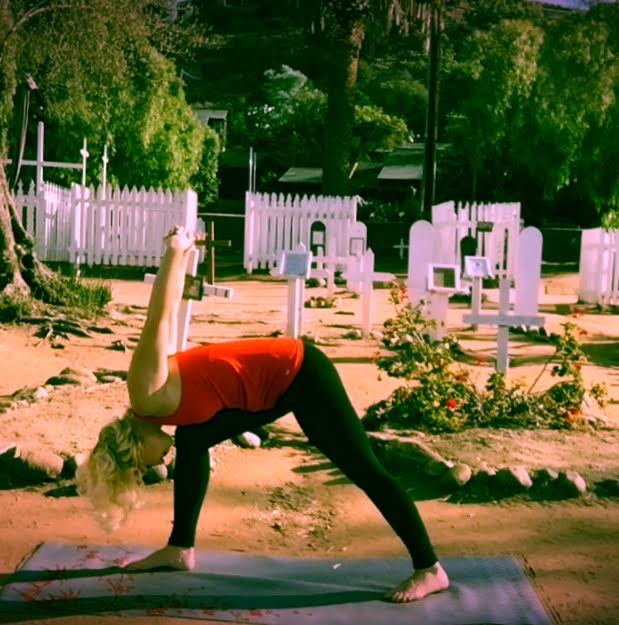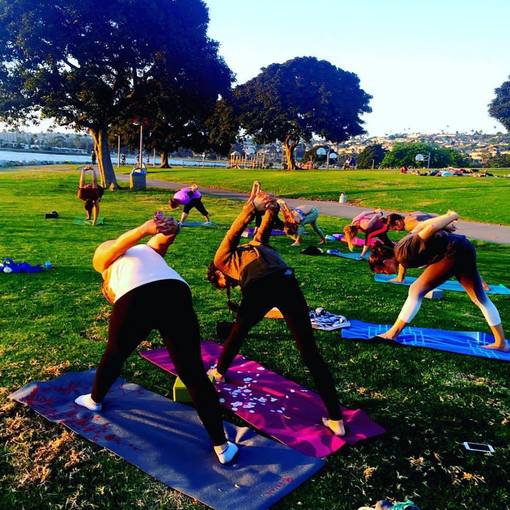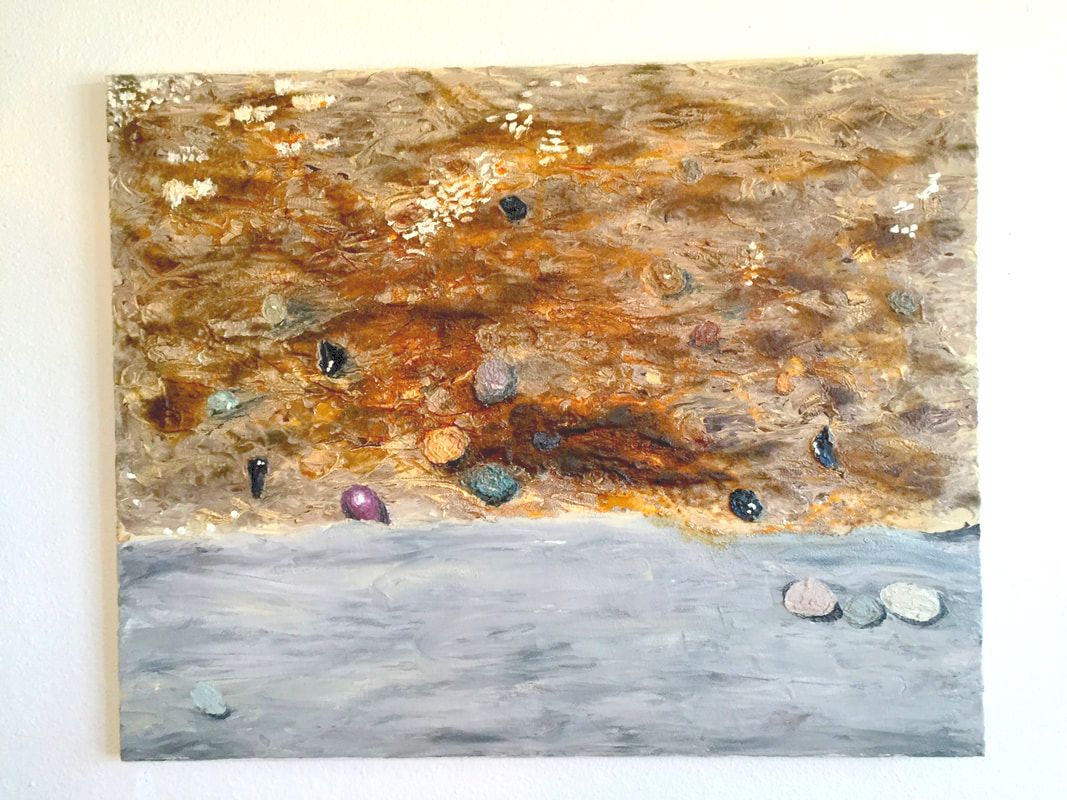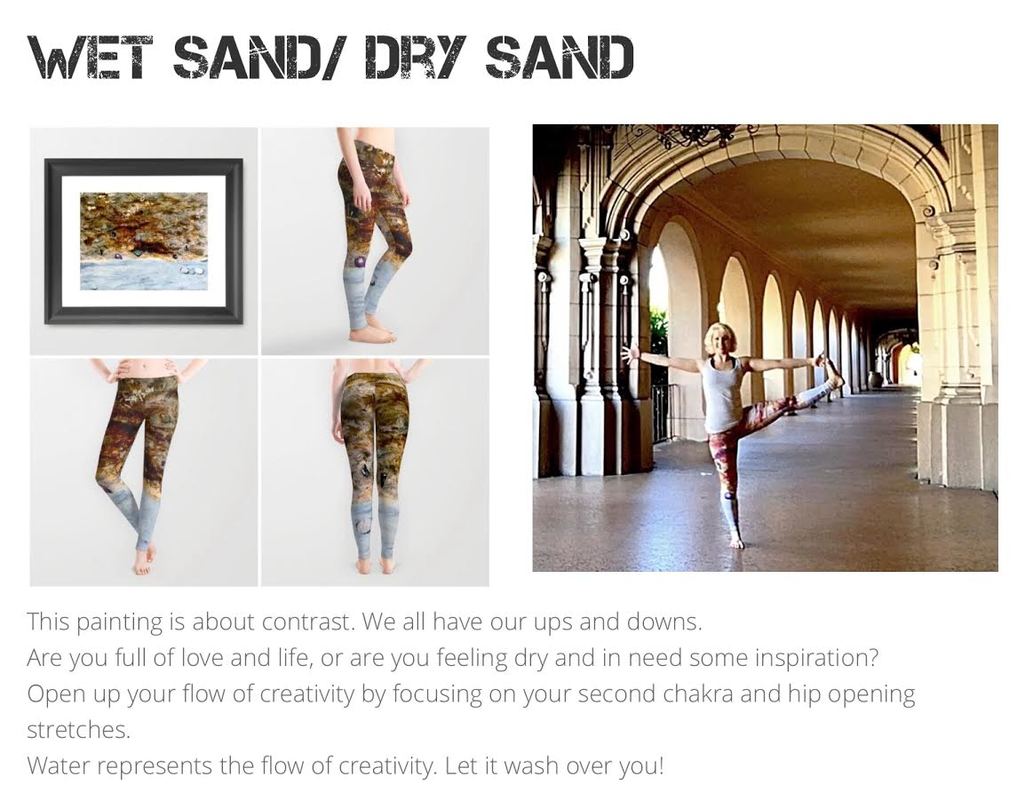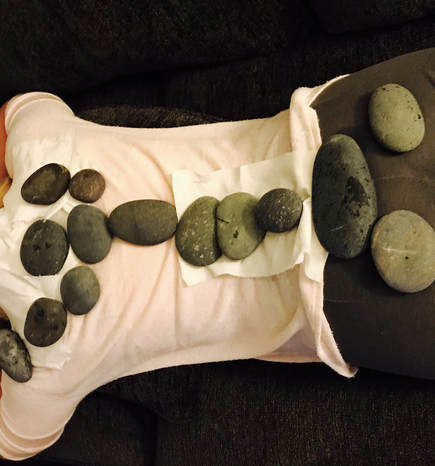Tiny hot fragments massaged the heel of my foot, then the arch, ball, and in between my toes. My calf muscles extended and tightened with each step. Suddenly, the refreshing edge of the vast sea snuck through my feet and ankles, bringing my awareness to its icy trace. From admiring the organic wind and sea layered auburn, ginger, and beige rock formations, to the contrast and patterns in the black and white sand, my attention was once again redirected to the sparkling stones all around me.
Should I choose a round and shiny black stone that fits in my palm with a high gloss highlight or perhaps a white jagged quartz that I can almost see through? These speckled stones are a stimulating mix of the two, while this small red one has a porous texture that stands out from the rest. Maybe something more complex would represent me better.
I started gathering the stones. “I reveled in each find like a child on an Easter egg hunt, plucking up the colorful little gems before the sea reclaims them” (The Numinosity of Rocks by Patricia Adams Farmer)
I gathered so many stones that I couldn’t even hold all of them. I glanced over a JoAnna, she is feeling the same sense of overwhelm and excessiveness. We both made a little pouch in our shirts as we piled more stones in.
We were only each supposed to choose one. This was a difficult task.
Which one stone represented my life here, my home, my past, my solidity, my burden?
Making our way over the mini boulders by the road, we sat down and unloaded our burden of rocks. Carefully we separated them into categories of Absolutely Love, Maybe, and Not as Much. After that, we tossed the Not as Much stones back into the sand and then the Maybes too. I was down to five stones and JoAnna had 3 left. We decided to take these finales home to wait for divine inspiration to guide us.
I started gathering the stones. “I reveled in each find like a child on an Easter egg hunt, plucking up the colorful little gems before the sea reclaims them” (The Numinosity of Rocks by Patricia Adams Farmer)
I gathered so many stones that I couldn’t even hold all of them. I glanced over a JoAnna, she is feeling the same sense of overwhelm and excessiveness. We both made a little pouch in our shirts as we piled more stones in.
We were only each supposed to choose one. This was a difficult task.
Which one stone represented my life here, my home, my past, my solidity, my burden?
Making our way over the mini boulders by the road, we sat down and unloaded our burden of rocks. Carefully we separated them into categories of Absolutely Love, Maybe, and Not as Much. After that, we tossed the Not as Much stones back into the sand and then the Maybes too. I was down to five stones and JoAnna had 3 left. We decided to take these finales home to wait for divine inspiration to guide us.
As I was packing for the Camino de Santiago in 2014, I decided to bring three: the quartz one to represent my past loves,
the black one for my fears,
and the layered one as excess.
For hundreds of years, pilgrims have been unloading their burdens at the Iron Cross at Cruz de Ferro, the highest point (approximately 5,000 feet) on the Camino Frances route of the Camino de Santiago. A small iron cross is mounted atop a tall wooden pole, which is atop a mound of stones that’s more than ten feet high.
This monument lies between the beautiful towns of Astorga and Ponferrada and has some of the most breathtaking views along the way. Astorga is known for its Episcopal Palace, designed by Antoni Gaudi, as well as a vast gothic cathedral.
Between those towns, we reached the Iron Cross by trekking through the small villages of Foncebadón where we contemplated sharing a barn albuergue with donkeys, cows, and goats (except, contrary to what the guidebook promised, there were no baby animals at this time of year) to Manjarín, in which there was only one resident, who dresses up as a Templar knight (for his visitors) and runs a rough albergue with no running water. Just outside the albergue are a number of wooden planks showing the distances to various places.
Foncebadón
Manjarín
When we came upon the Iron Cross, we felt a heavy sacred presence as we approached. A variety of rituals surround the surrendering of stones. This tradition was originally a religious one, to say a prayer at the Iron Cross and leave the stone behind, would symbolize that you were leaving behind your sins. Over the past few decades, the tradition has been leaving behind not only the sins that pilgrims carry but also other burdens in their life.
Some pilgrims meditate in the fields next to the site, others climb instantly to the base of the cross and pray, some enthusiastically take photographs with fellow pilgrims. Some pilgrims believe you can pick up a stone while you’re walking the Camino, put your sorrow into it, and disburden yourself of that sorrow when you put the stone down. These stacked stones of sorrow used to show the way, before yellow arrows. For all pilgrims, this is a stopping place to take the time to honor their journey. I slowly scanned the stack, recognizing that each unique stone represented a soul that was awakening to a life with a deeper connection to the divine by letting go of what is not serving them, Aparigraha (part of the Yamas in the Eight Limbed Path to Enlightenment).
Some pilgrims meditate in the fields next to the site, others climb instantly to the base of the cross and pray, some enthusiastically take photographs with fellow pilgrims. Some pilgrims believe you can pick up a stone while you’re walking the Camino, put your sorrow into it, and disburden yourself of that sorrow when you put the stone down. These stacked stones of sorrow used to show the way, before yellow arrows. For all pilgrims, this is a stopping place to take the time to honor their journey. I slowly scanned the stack, recognizing that each unique stone represented a soul that was awakening to a life with a deeper connection to the divine by letting go of what is not serving them, Aparigraha (part of the Yamas in the Eight Limbed Path to Enlightenment).
Join us next summer, 2018, on the Meditative Yoga Pilgrimage on the Camino de Santiago in northern Spain.
According to the ancient yoga philosopher, Pantajali, the spiritual journey of a yogi can be likened to carrying a full load of rocks on one’s shoulder while climbing up a hill, but each time a yogi meditates, he or she starts to throw these rocks away from his or her shoulder one by one. The further the yogi goes, the lighter that load of rocks on his or her shoulder will become until the yogi has reached to the top of the hill. At this point, the yogi has nothing left to throw away. If there are some rocks remaining, they are not important. At this time, the spirit or consciousness of the yogi becomes free of the bondage that has covered it.
Rocks are collections of vibrant energy rather than passive lumps of matter. Primitive human beings believed that rocks were filled with gods and spirits. The longevity of structures made of rock and stone often means that they are associated with the divine and the eternal. Have you heard of Jesus’ sermon on “The Rock of Ages,” the God of eternity who is the beginning and the end. Native Americans viewed rocks as the bones of Mother Earth. In the same way, homes are not only built for the living, but also for the dead. Piling rocks on graves or creating tombstones, were once believed to contain the spirit of the loved one. In the same way, the earliest sculptors sought to "free the spirit" within the stone as they carved masterpieces out of them. Stone formations often symbolize the passage from one life to the next. They are healing because they can connect us to something beyond our struggles and mortality. (Ancient Wisdom in Rocks and Stones)
Humble warrior pose is a forward bend that requires stability, balance, and a deep groin and shoulder stretch. When you trust this pose and let yourself surrender, you release any need to grasp and cling. Other benefits include: stimulating the nervous system and abdominal organs, opening the lungs and chest, stretching the arms, legs, back, and neck, as well as strengthening the legs and ankles.
In humble warrior pose, your legs are positioned in a lunge with your front knee is straight over your ankle (as in warrior one), and your hips squared toward the front of the mat. Your hands are interlaced behind the back with the palms touching. Your body hinges at the hips and folds forward as your arms stretch behind you. The crown of your head leans towards the floor.
In humble warrior pose, your legs are positioned in a lunge with your front knee is straight over your ankle (as in warrior one), and your hips squared toward the front of the mat. Your hands are interlaced behind the back with the palms touching. Your body hinges at the hips and folds forward as your arms stretch behind you. The crown of your head leans towards the floor.
Seasonally, I walk along these same shores of Torrey Pines State Beach. Each time these walks represent struggles to overcome and perspectives to be gained. They have inspired this painting and they yoga leggings. Consider how you might infuse your day to day life with reminders of the building blocks of your life. Many myths, fables and stories use rocks to symbolize the obstacles a character must overcome to complete their quest to attain steadfast wisdom, enduring perseverance, or joyful awe.
Stones have been used throughout history for therapy. The practice began among the Hindus in India approximately 5,000 years ago, and was called Ayurveda. This involved the placement of stones on the body to relax tense muscles and relieve related pain. Further, Chinese used heated stones more than 2,000 years ago as a means of improving the function of internal organs. Spanish healers, called curanderas, used heated stones to relieve period pain and cold stones to slow bleeding after child birth. Some cultures documented that women held stones during labor which added to their strength and endurance. Stones were also used for healing work in North America, South America, Africa, Europe, and Egypt. Because of their incredible energy, stones are also used in reiki, polarity therapy and cranial sacral work.
A couple of months ago, my friends decided to have a Do-It-Yourself Spa Day. I had the idea of returning to my favorite beach, Torrey Pines to choose some stones to use for Hot Stone Therapy. We heated them up in a crockpot with a few drops of essential oils on medium and took turns giving and receiving this warmth and relaxation. If you try this at home, please remember to always use a barrier, such as a specific textile product designed for stone placement, or at least a sheet or towel to protect your skin.
A couple of months ago, my friends decided to have a Do-It-Yourself Spa Day. I had the idea of returning to my favorite beach, Torrey Pines to choose some stones to use for Hot Stone Therapy. We heated them up in a crockpot with a few drops of essential oils on medium and took turns giving and receiving this warmth and relaxation. If you try this at home, please remember to always use a barrier, such as a specific textile product designed for stone placement, or at least a sheet or towel to protect your skin.
